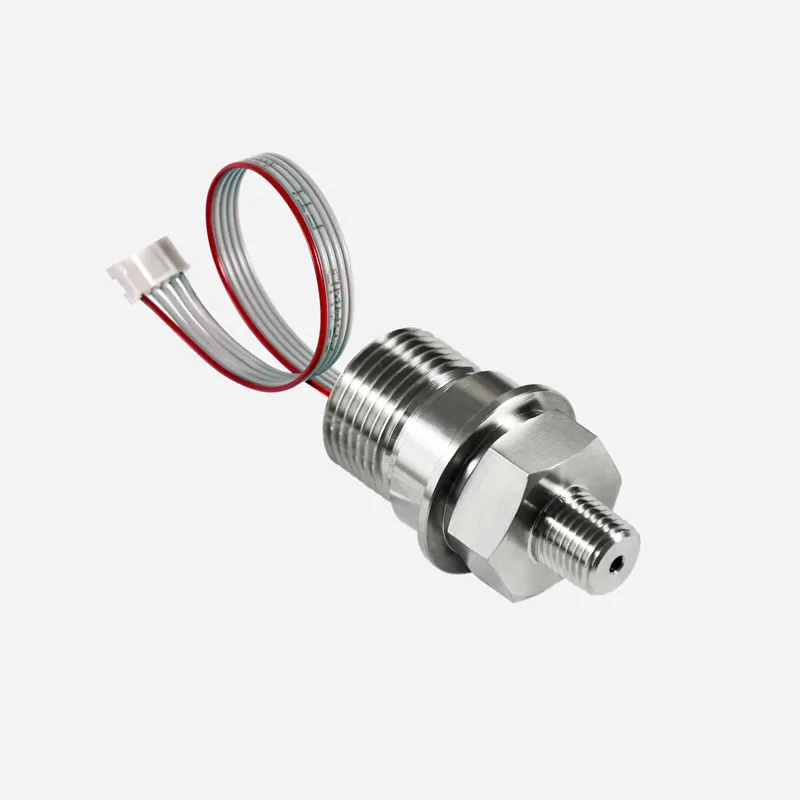IIC Pressure Sensor
Range:0bar~0.07bar…1000bar
Accuracy: ±0.25%FS
Digital IIC output
New Product Change Notice (PCN) effective Jan 1, 2025. MICROSENSOR appreciate your understanding.
MPM3801A
Used For
Flowmeter, IoT, Natural gas industry, Electricity industry, Petroleum and chemical industry
Leave a MessageMPM3801A digital pressure transmitter is a pressure transducer with a digital output product suitable for the general industry. The general-purpose structure of this product can cover more industrial application scenarios. The internal sensor and base of MPM3801A are assembled structures, and the measuring range can reach 100MPa.
There are two types of MPM3801A, Type I and Type II. Type I has slightly larger dimensions and is suitable for industries such as mechanical equipment matching and hydraulic systems. Type II is a component type, and its structure has a standard thread of M20 or M27 at the outlet end. This thread can be installed in the equipment or gauge heads. Therefore, Type II products can be applied to secondary instruments, IoT terminals, etc.
Feature
• I²C digital air pressure sensor
• Low power consumption
• Accuracy: ±0.25%FS
• General industrial application
Specification
• Range: 0mbar~1000bar
• Overpressure: ≤2 times FS or 1100 bar (minimum value is valid)
• Pressure Type: gauge, absolute, sealed gauge
• Pressure Accuracy: ±1%FS, ±0.5%FS, ±0.25%FS
• Temperature Accuracy: ±1.5℃ (tested in constant temperature for reference)
• Long-term Stability: ±0.2%FS/year
• Compensated Temperature: -10℃ ~ 50℃
• Application Temperature: -20℃ ~ 80℃
• Storage Temperature: -20℃ ~ 85℃
Image:
MPM3801A digital pressure transmitter is a pressure transducer with a digital output product suitable for the general industry. The general-purpose structure of this product can cover more industrial application scenarios. The internal sensor and base of MPM3801A are assembled structures, and the measuring range can reach 100MPa.
There are two types of MPM3801A, Type I and Type II. Type I has slightly larger dimensions and is suitable for industries such as mechanical equipment matching and hydraulic systems. Type II is a component type, and its structure has a standard thread of M20 or M27 at the outlet end. This thread can be installed in the equipment or gauge heads. Therefore, Type II products can be applied to secondary instruments, IoT terminals, etc.
Feature
• I²C digital air pressure sensor
• Low power consumption
• Accuracy: ±0.25%FS
• General industrial application
Specification
• Range: 0mbar~1000bar
• Overpressure: ≤2 times FS or 1100 bar (minimum value is valid)
• Pressure Type: gauge, absolute, sealed gauge
• Pressure Accuracy: ±1%FS, ±0.5%FS, ±0.25%FS
• Temperature Accuracy: ±1.5℃ (tested in constant temperature for reference)
• Long-term Stability: ±0.2%FS/year
• Compensated Temperature: -10℃ ~ 50℃
• Application Temperature: -20℃ ~ 80℃
• Storage Temperature: -20℃ ~ 85℃
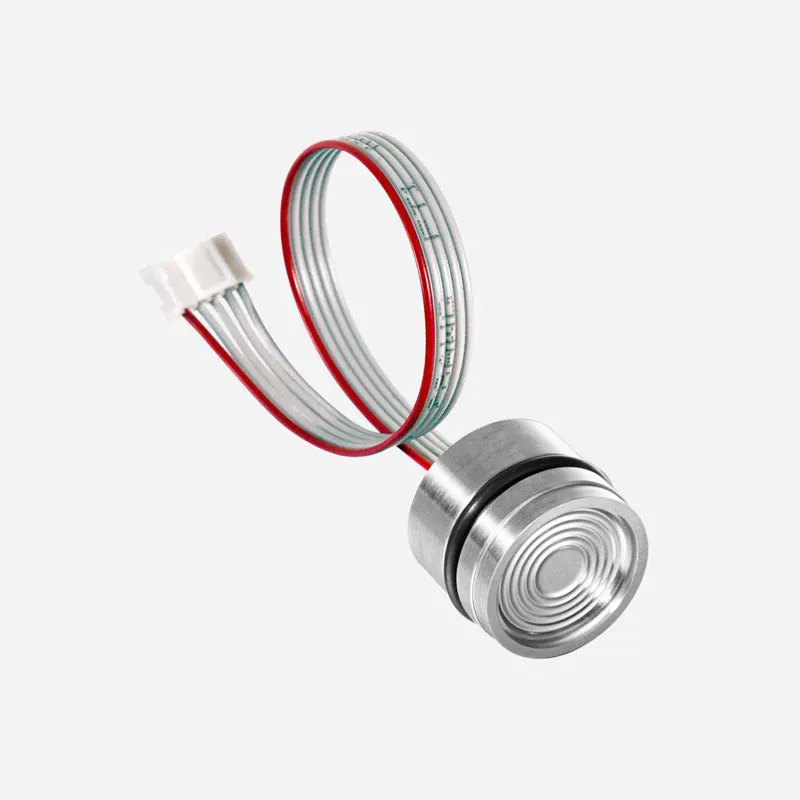
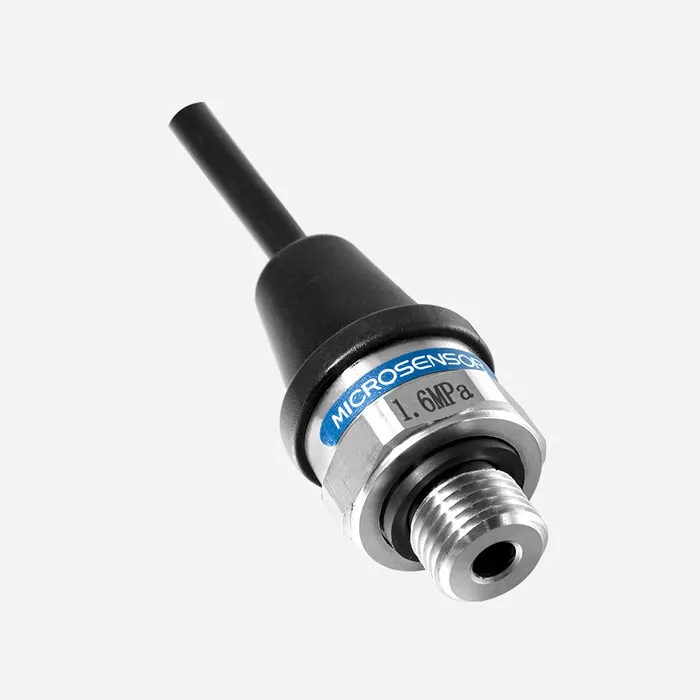
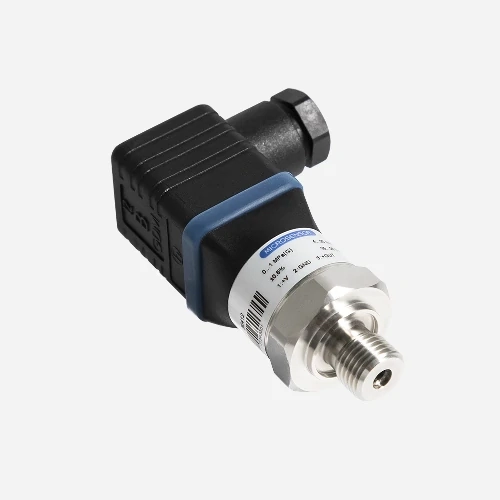
Range: 0~250mbar to 0~250bar
Accuracy:±0.25%FS, ±0.5%FS
Output: 4mA~20mA DC, 0/1V~5/10V DC, 0.5V~4.5V DC
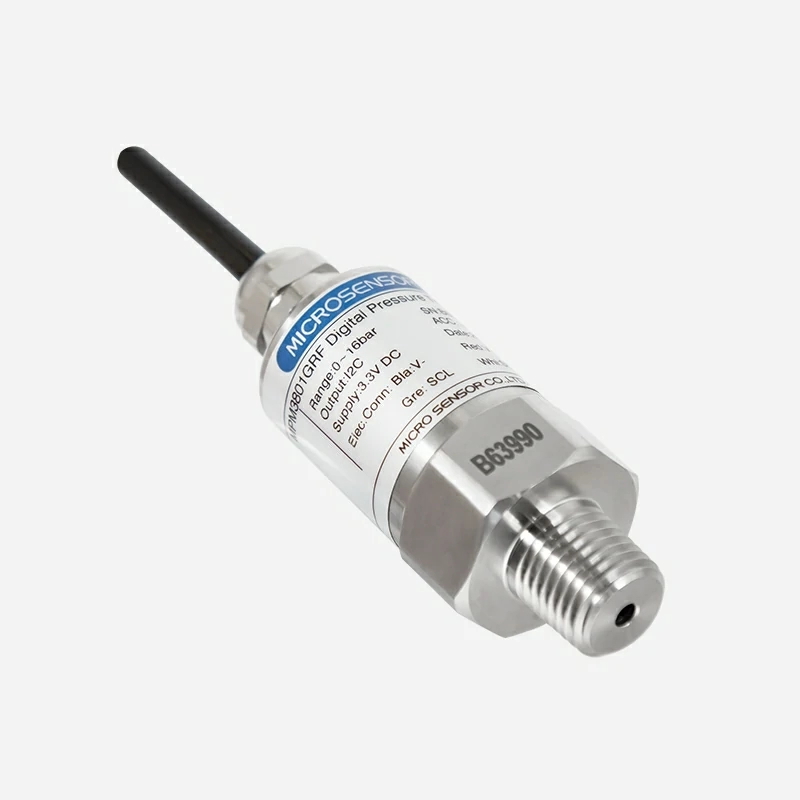
I²C or SPI protocol
Low power consumption: standby power consumption ≤ 5μA, average working current ≤ 2.5mA
Low-voltage power supply: 3.3V, 5V, battery-powered
Secondary temperature compensation, total accuracy up to ±0.25%FS
RoHS and Reach approved
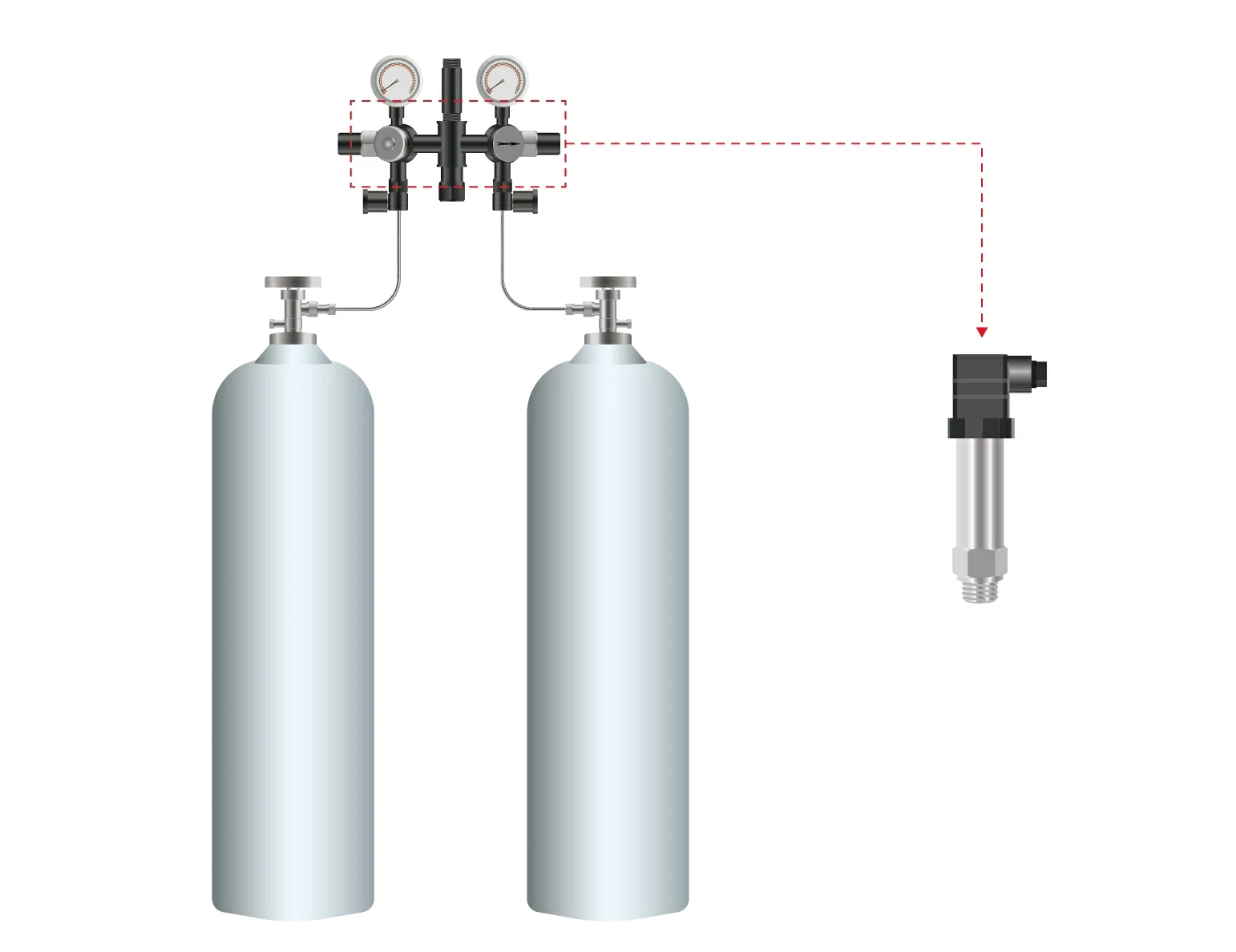
Pressure Transmitters are needed to monitor the pressure in the gas supply pipeline of the compressed gas cylinder to ensure safety.
more info...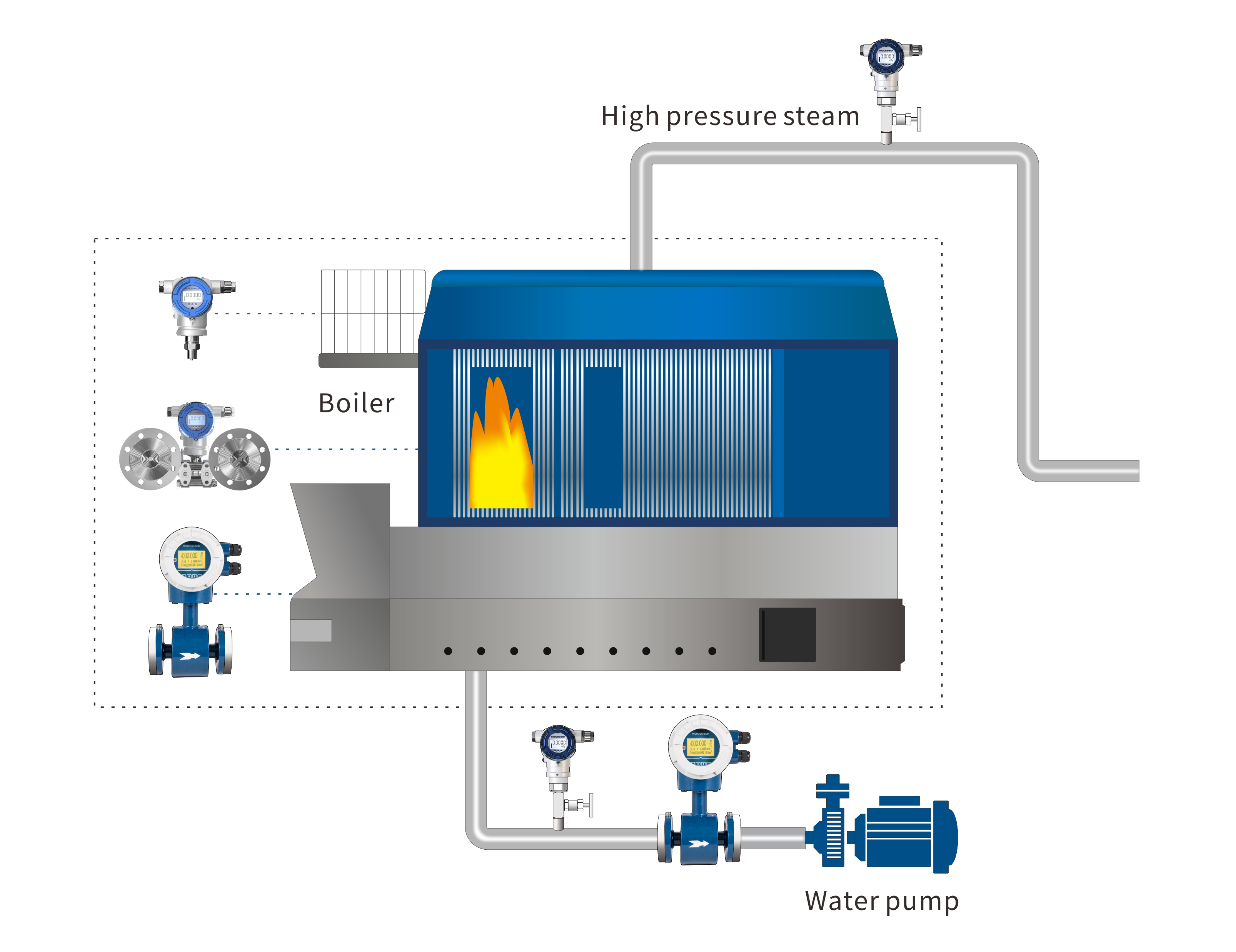
In the electric power industry, especially in power plants and transmission systems, it is very important to accurately monitor and control pressure, level, temperature and flow, because these specifications will directly affect the operating efficiency and safety of the system. Micro Sensor's monitoring instrumentation solutions integrate advanced sensor technology and intelligent control systems, which can provide accurate data and efficient control even in complex environments, and optimize the power production and transmission process.
more info...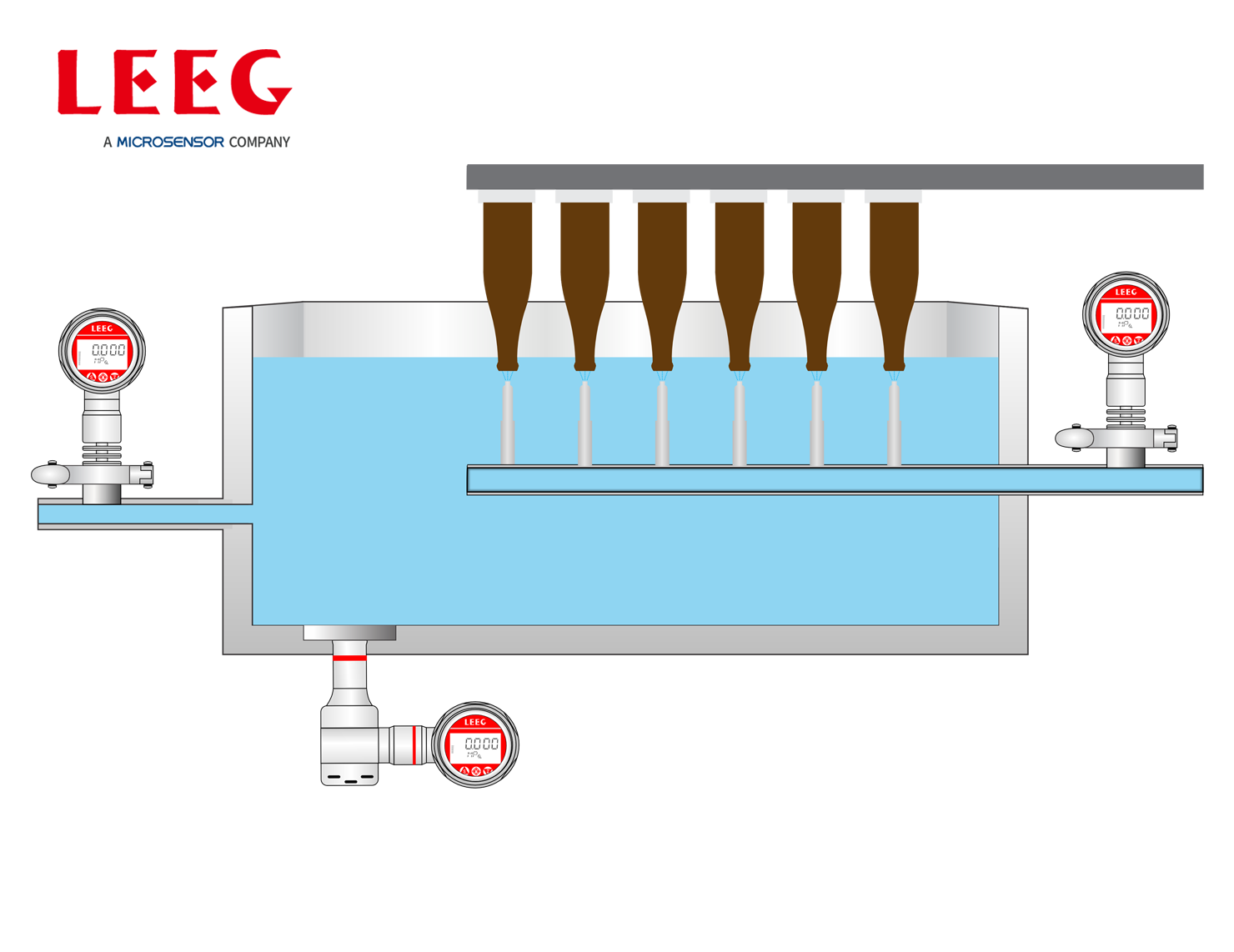
Before beer bottles, medicine bottles, and condiment bottles are filled with liquid, they need to be cleaned first. The cleaning process is as follows: First, the bottles are filled with lye in the alkali tank to remove most of the stains; then, the bottles are back washed with high pressure using water of different temperatures to wash away the remaining impurities and lye. To ensure the stable operation of the bottle washing machine, the level of the alkali tank needs to be measured by hydrostatic pressure. In addition, the pressure of the alkali tank water inlet pipe and the nozzle pipe also needs to be measured.
more info...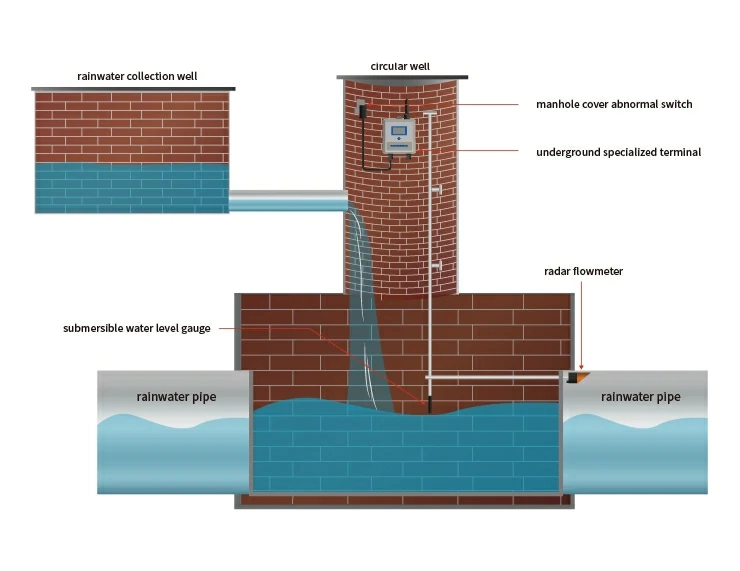
Sump wells are important facilities for convenient daily inspection, prevention, and dredging of drainage pipe blockages. By deploying monitoring instruments at the bottom of the well, a comparison of drainage volume and rainfall is made, allowing for the prediction of flooding points and drainage times under real-time changing drainage conditions. When the water level data exceeds the preset warning value, a timely alarm is given, effectively preventing urban flooding.
more info...